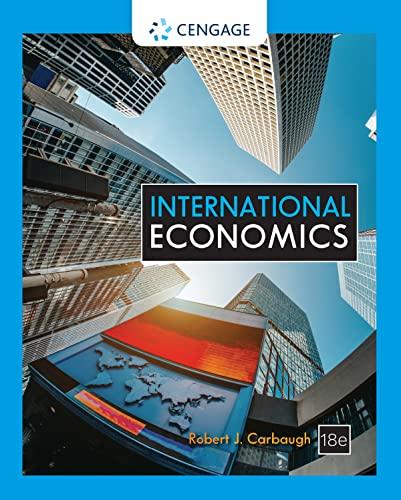The possibility that the United States could lose from free trade is at the heart of some
Question:
The possibility that the United States could lose from free trade is at the heart of some recent critiques of globalization. One critique contends that the world has tended to become "flat" as comparative advantages have dwindled or dried up. Proponents of this view note that as countries such as China and India undergo economic development and become more similar to the United States, a level playing field emerges. The flattening of the world is largely due to countries becoming interconnected as the result of the Internet, wireless technology, search engines, and other innovations. Consequently, capitalism has spread like wildfire to China, India, and other countries where factory workers, engineers, and software programmers are paid a fraction of what their American counterparts are paid. As China and India develop and become more similar to the United States, the United States could become worse off with trade.
However, not all economists agree with this view. They see several problems with this critique. First, the general view of globalization is that it is a phenomenon marked by increased international economic interdependence. However, the above critique is of a situation in which development in China and India leads to less trade, not more. If China and the United States have differences that allow for gains from trade (for example, differences in technologies and productive capabilities), then removing those differences may decrease the amount of trade and thus decrease the gains from that trade. The worst-case scenario in this situation would be a complete elimination of trade. This is the opposite of the typical concern that globalization involves an overly rapid pace of international economic interdependence.
The second problem with the critique is that it ignores the ways in which modern trade differs from Ricardo's simple model. The advanced nations of the world have substantially similar technology and factors of production, and seemingly similar products such as automobiles and electronics are produced in many countries, with substantial trade back and forth. This is at odds with the simplest prediction of the Ricardian model, under which trade should disappear once each country is able to make similar products at comparable prices. Instead, the world has observed substantially increased trade since the end of World War II. This increase reflects the fact that there are gains to intra-industry trade, in which broadly similar products are traded in both directions between nations; for example, the United States both imports and exports computer components. Intra-industry trade reflects the advantages garnered by consumers and firms from the increased varieties of similar products made available by trade, as well as the increased competition and higher productivity spurred by trade. Given the historical experience that trade flows have continued to increase between advanced economies even as production technologies have become more similar, one would expect the potential for mutually advantageous trade to remain even if China and India were to develop so rapidly as to have similar technologies and prices as the United States. Finally, it is argued that the world is not flat at all.
While India and China may have very large labor forces, only a small fraction of Indians are prepared to compete with Americans in industries like information technology, while China's authoritarian regime is not compatible with the personal computer. The real problem is that comparative advantage can change very rapidly in a dynamic economy. Boeing might win today, Airbus tomorrow, and then Boeing may be back in play again.
What do you think? Has the world become flatter regarding the drying up of comparative advantages?
Step by Step Answer:






